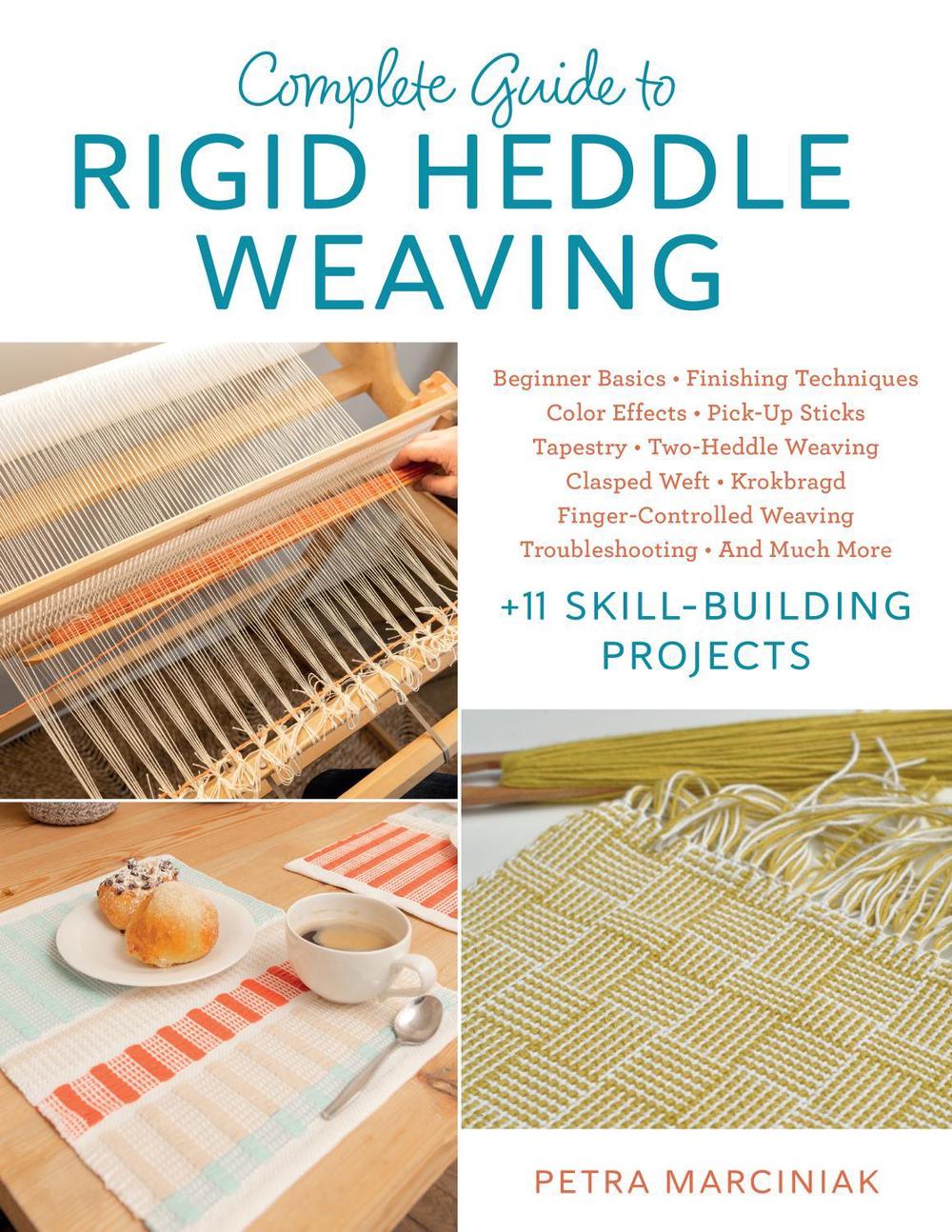
Complete Guide to Rigid Heddle Weaving
beginner basics, finishing techniques, color effects, pick-up sticks, tapestry, two-heddle weaving, clasped weft, krokbragd, finger-controlled weaving, troubleshooting, and much more plus 11 skill-building projects
$62.24
- Paperback
152 pages
- Release Date
30 June 2025
Summary
Unleash Your Weaving Potential: A Complete Guide to Rigid Heddle Mastery
The rigid heddle loom offers a fantastic alternative to larger floor looms, prized for its compact size, affordability, and user-friendly design. Perfect for creating small to medium-sized projects, this loom is accessible to weavers of all skill levels.
This comprehensive guide begins with photo-illustrated instructions, guiding you through the essential steps of preparing your materials, setting up yo…
Book Details
| ISBN-13: | 9780811776752 |
|---|---|
| ISBN-10: | 0811776751 |
| Author: | Petra Marciniak |
| Publisher: | Stackpole Books |
| Imprint: | Stackpole Books |
| Format: | Paperback |
| Number of Pages: | 152 |
| Release Date: | 30 June 2025 |
| Weight: | 431g |
| Dimensions: | 254mm x 203mm x 8mm |
You Can Find This Book In
What They're Saying
Critics Review
The Everything Book for Rigid-Heddle Weavers
By Christina Garton
When I first learned of Petra Marciniak’s book Complete Guide to Rigid Heddle Weaving, I was unfamiliar with the author and her work as a designer, weaver, and teacher. After reading her book, I am an unabashed Marciniak fan-especially of her ability to explain weaving techniques in a way that makes them feel doable, even for beginners.
The scope of this book is truly outstanding. As the cover states, its topics include beginner basics, finishing techniques, color effects, pick-up sticks, tapestry, two-heddle weaving, clasped weft, krokbragd, finger-controlled weaving, troubleshooting, and much more. Marciniak succeeds in covering these topics in enough depth that you can go from never having woven krokbragd, for example, to starting a project with confidence.
Marciniak begins with the basics: weaving terms, required tools, yarn and fiber options, and calculations of yardage and sett. I was especially impressed by the chapter on yarn, in which Marciniak’s experience as a spinner shines. Her insight into choosing yarns based on fiber and construction is incredibly helpful, and I found myself making notes for my own use.
As the book progresses, Marciniak goes on to cover direct warping and the process of weaving, with dozens of step-by-step photos. Her attention to detail shines through. For example, in the section on hemstitching, she includes instruction and photos for hemstitching not only at the start of a project but also for the end of the project. As if that weren’t enough, a tip box includes a clever mnemonic for remembering how to approach hemstitching at each end. In another chapter, she warns weavers in a tip box to cut finished cloth off the loom slowly, so the rapid release of tension doesn’t cause the weft to ravel–a lesson many of us learned the hard way.
After she covers the basics, Marciniak dives right into the many ways weavers can expand their designs through variations on plain weave, hand-manipulation techniques, using two heddles, using heddle rods with string heddles, and so on. Each technique is explained in detail, with plenty of photos. I found that even complex topics were presented in ways that didn’t feel overwhelming: instead, I felt emboldened and empowered to try structures I’ve never woven.
The final section of the book features and lovely selection of projects, including the charming scarf excerpted on page 22 in this issue, that are perfect for first-time weavers or for those wanting to try out new techniques. While Marciniak is from France, her love of Scandinavian and Japanese textiles shows in her beautiful designs. Each project focuses on one or two techniques, and I especially appreciated that Marciniak includes not only the difficulty level but also the estimated project time and details on the sewing required.
While I consider myself a moderately accomplished rigid-heddle weaver, I plan on keeping Complete Guide to Rigid Heddle Weaving easily at hand in my library. It’s the perfect book for those just beginning their rigid-heddle weaving journey, and it’s also a valuable resource for weavers who might need a refresher on how to work Danish medallions or a tutorial on setting up a heddle rod. In the end, my only suggestion for Marciniak is that she write more weaving books.
WHO THIS BOOK IS FOR: People who want to learn how to weave on a rigid-heddle loom, as well as beginning through intermediate rigid-heddle weavers. Advanced rigid-heddle weavers might find useful information, depending on the breadth of their experience.
WHAT YOU CAN EXPECT TO LEARN: Readers will learn everything they need to know to get started weaving on a rigid-heddle loom, with advice, tips, and techniques for hand-manipulation, using multiple heddles and/or heddle rods, designing original projects, and finishing.
THE FINAL WORD: Complete Guide to Rigid Heddle Weaving starts with the basics and then challenges weavers to expand their designs and try something new. With this book’s clear instructions and beautiful photos, it’s like having a world-class weaving teacher on your bookshelf. –Christina Garton “Easy Weaving with Little Looms”
About The Author
Petra Marciniak
Petra Marciniak has been weaving for around ten years. She started her own weaving business in 2019, and sells her creations and offers introductory courses.
Returns
This item is eligible for free returns within 30 days of delivery. See our returns policy for further details.




